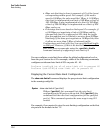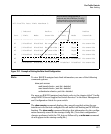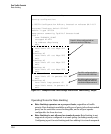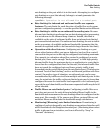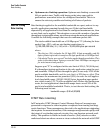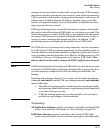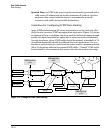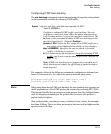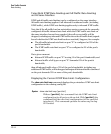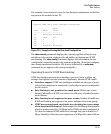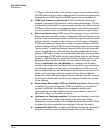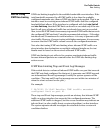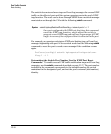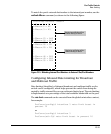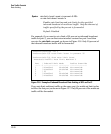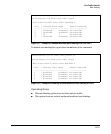
Port Traffic Controls
Rate-Limiting
Using Both ICMP Rate-Limiting and All-Traffic Rate-Limiting
on the Same Interface
ICMP and all-traffic rate-limiting can be configured on the same interface.
All-traffic rate-limiting applies to all inbound or outbound traffic (including
ICMP traffic), while ICMP rate-limiting applies only to inbound ICMP traffic.
Note that if the all-traffic load on an interface meets or exceeds the currently
configured all-traffic inbound rate-limit while the ICMP traffic rate-limit on
the same interface has not been reached, then all excess traffic will be
dropped, including any inbound ICMP traffic above the all-traffic limit (regard-
less of whether the ICMP rate-limit has been reached). Suppose, for example:
■ The all-traffic inbound rate-limit on port “X” is configured at 55% of the
port’s bandwidth.
■ The ICMP traffic rate-limit on port “X” is configured at 2% of the port’s
bandwidth.
If at a given moment:
■ Inbound ICMP traffic on port “X” is using 1% of the port’s bandwidth, and
■ Inbound traffic of all types on port “X” demands 61% of the ports’s
bandwidth,
then all inbound traffic above 55% of the port’s bandwidth, including any
additional ICMP traffic, will be dropped as long as all inbound traffic combined
on the port demands 55% or more of the port’s bandwidth.
Displaying the Current ICMP Rate-Limit Configuration
The show rate-limit icmp command displays the per-interface ICMP rate-limit
configuration in the running-config file.
Syntax: show rate-limit icmp [ port-list ]
Without [ port-list ], this command lists the ICMP rate-limit
configuration for all ports on the switch. With [ port-list ], this
command lists the rate-limit configuration for the specified
interface(s). This command operates the same way in any
CLI context.
13-14



